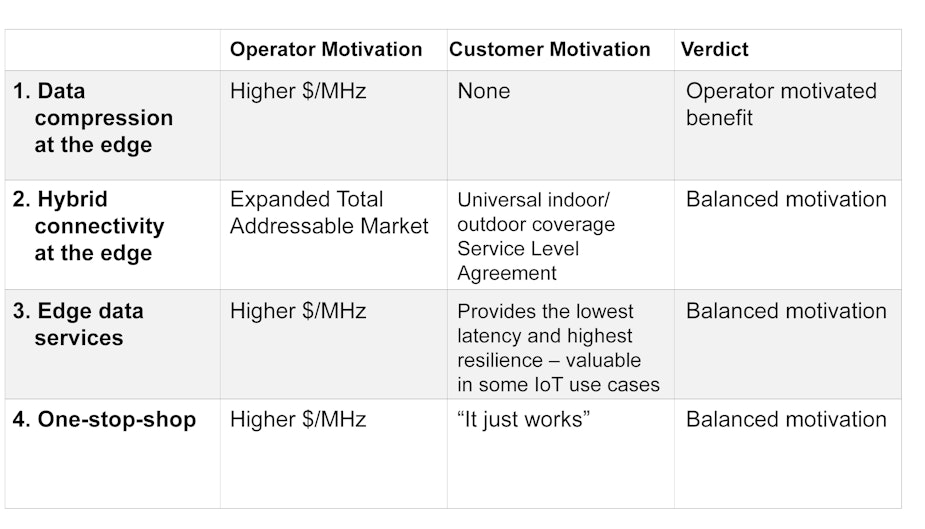4 Benefits Satellite Operators and their Customers gain from an Edge-Centric Approach to the Industrial IoT
By Adrian Hillier

In our concept paper “Satellite at the Edge”, we extolled the virtues of an edge-centric approach to Satellite IoT. Having described the “what”, we now set out the “why” by outlining four major benefits and asking whether they primarily advantage satellite network operators or their customers.
In March 2018 we launched our concept paper Satellite at the Edge, anticipating edge-centric service portals that integrate hybrid cellular and satellite connectivity with device management and edge data services. We see four major benefits from developing such services:
- Data compression at the edge. When delivering managed services at the edge, satellite operators become the main beneficiary of data compression. The same service revenues can be realised through reduced network utilisation. That largely favours the L-band and S-band service operators, or perhaps VSAT service providers with access to limited transponder bandwidth.
- Hybrid connectivity at the edge. By delivering hybrid (satellite plus cellular) connectivity services at the edge, operators are best positioned to serve the broadest possible set of industrial IoT use cases from one single platform. Customers may place further value on such “always on” hybrid services, especially if backed-up by a Service Level Agreement, thus attracting premium pricing versus “vanilla” connectivity plans.
- Edge data services. By enabling data-driven insights to be generated at the edge, satellite operators might further reduce IoT cloud backhaul traffic in their spotbeams. For end users, lowest latency event detection and/or resilience to a communications blackout could be a consideration. This is important for some IoT use cases (e.g. critical asset monitoring) but probably inconsequential for many others (e.g. agritech).
- One-stop-shop. By bundling a trusted device-management platform together with their hybrid connectivity and data services, operators become fully repositioned to sell a one-stop-shop for Industrial IoT. Customers will usually pay a premium for well-integrated services designed to make their lives easier.
Satellite operator and customer: who benefits from Satellite at the Edge?
The development and delivery of edge-centric satellite IoT services would appear to offer significant benefits to both network operators and end-users alike, but it remains uncertain which party is motivated to make the first move. The market implication for laggards is equally murky.

With several new constellations planned for launch in coming years, it seems the satellite industry will have swathes of raw space capacity available to serve IoT applications. The big unknown is: how to monetize this opportunity?
I forecast that perhaps the most interesting answers to that question will be found at the edge.



